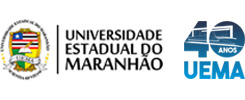Use este identificador para citar ou linkar para este item:
https://repositorio.uema.br/jspui/handle/123456789/3629| Título: | Estudo comparativo entre o concreto convencional e o concreto com adição de fibra ótica |
| Título(s) alternativo(s): | Comparative study between conventional concrete and concrete with addition of optical fiber |
| Autor(es): | Leite Neto, Solon Tupinamba |
| Orientador: | Aroucha Junior, José Átila Matos |
| Membro da Banca: | Demetrio, Fernando Jorge Cutrim |
| Data do documento: | 2024-08-12 |
| Editor: | Universidade Estadual do Maranhão |
| Resumo: | O presente estudo tem como principal objetivo realizar um estudo comparativo entre o concreto convencional e o concreto com adição de fibra ótica. Para isso, foram realizados ensaios experimentais de resistência à compressão em corpos de prova cilíndricos (28 dias) e de transmitância luminosa em painéis translúcidos fabricados com diâmetros de 3,00mm, 1,00mm e 0,75mm, contendo 4% de proporção em volume de fibras tanto para os corpos de prova quanto para os painéis translúcidos. O foco do estudo está na comparação entre os corpos de prova confeccionados, buscando avaliar qual mistura apresentou os melhores resultados quando submetida ao carregamento compressivo e qual das fibras óticas poliméricas (FOP) apresentou os resultados mais favoráveis. Além disso, buscou-se também avaliar e comparar os resultados de transmitância luminosa nos painéis translúcidos sob luz natural nos horários de 10h, 12h, 14h e 16h em ambas as faces dos painéis (A e B), ao longo de 28 dias, e sob luz artificial utilizando uma lâmpada de LED. Pelo estudo, ficou evidente que os corpos de prova de com adição de FOP apresentaram resultados de resistência à compressão inferiores quando comparados ao concreto convencional. Entretanto, dentre as misturas com adição, verifica-se que o concreto com FOP de maior diâmetro (3,00mm) apresentou os resultados mais favoráveis. No que se refere à transmitância luminosa, constatou-se que a face B do painel com FOP de Ø1,00mm apresentou os resultados mais favoráveis. Contudo o resultado médio total entre os painéis indica que o painel com FOP de Ø3,00mm obteve os resultados mais satisfatórios sob luz natural. Sob luz artificial os resultados mostraram-se muito próximos, com uma ligeira vantagem para o painel com FOP de Ø1,00mm, cuja diferença em relação ao painel de maior diâmetro foi de apenas 1 Lux. Dessa forma, conclui-se que dentre os concretos com adição de fibra ótica ensaiados experimentalmente, a mistura com FOP de maior diâmetro (Ø3,00mm) apresentou os resultados mais favoráveis, alcançando valores de resistência à compressão mais próximos do concreto convencional e obtendo simultaneamente os resultados médios totais mais satisfatórios no tocante à transmitância luminosa sob luz natural, com uma diferença mínima sob luz artificial |
| Resumo: | The main objective of this study is to carry out a comparative study between conventional concrete and concrete with the addition of optical fiber. To this end, experimental tests of compressive strength were carried out on cylindrical specimens (28 days) and of light transmittance on translucent panels manufactured with diameters of 3.00mm, 1.00mm and 0.75mm, containing 4% proportion by volume of fibers for both the specimens and the translucent panels. The focus of the study is on the comparison between the manufactured specimens, seeking to evaluate which mixture presented the best results when subjected to compressive loading and which of the polymeric optical fibers (POF) presented the most favorable results. Furthermore, we also sought to evaluate and compare the results of light transmittance on translucent panels under natural light at 10 am, 12 pm, 2 pm and 4 pm on both sides of the panels (A and B), over 28 days, and under artificial light using an LED lamp. From the study, it was evident that the specimens with the addition of POF presented lower compressive strength results when compared to conventional concrete. However, among the mixtures with addition, it appears that concrete with larger diameter POF (3.00mm) presented the most favorable results. With regard to light transmittance, it was found that face B of the panel with a POF of Ø1.00mm presented the most favorable results. However, the total average result between the panels indicates that the panel with a Ø3.00mm POF obtained the most satisfactory results under natural light. Under artificial light, the results were very close, with a slight advantage for the panel with a Ø1.00mm POF, whose difference in relation to the panel with a larger diameter was only 1 Lux. Therefore, it is concluded that among the concretes with the addition of optical fiber experimentally tested, the mixture with larger diameter POF (Ø3.00mm) presented the most favorable results, achieving compressive strength values closer to conventional concrete and simultaneously obtaining the most satisfactory total average results in terms of luminous transmittance under natural light, with a minimal difference under artificial light |
| Palavras-chave: | Concreto Ensaio experimental Fibra ótica Resistência Transmitância luminosa Concreto convencional Concreto - Adição de fibra ótica Concrete Experimental test Optical fiber Resistance Light transmittance Conventional concrete Concrete - Addition of fiber optics |
| Aparece nas coleções: | Curso de Bacharelado em Engenharia Civil - Monografias |
Arquivos associados a este item:
| Arquivo | Descrição | Tamanho | Formato | |
|---|---|---|---|---|
| MONOGRAFIA - SOLON TUPINAMBA LEITE NETO - BACH. ENG. CIVIL CCT UEMA 2024.pdf | PDF A | 6.11 MB | Adobe PDF | Visualizar/Abrir |
Os itens no repositório estão protegidos por copyright, com todos os direitos reservados, salvo quando é indicado o contrário.
